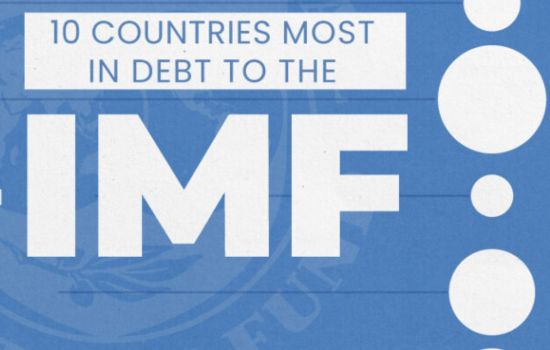Here are Top 10 countries that International Monetary Fund (IMF) is critical in monitoring global economic stability, providing financial aid, and advising countries experiencing economic difficulties. The level of national debt is a significant issue that the IMF monitors. High debt level can signal underlying economic problems and jeopardize a country’s financial stability. According to the latest IMF data, we look at the top 10 countries with the most debt.
Table of Contents
Top 10 Countries:
Japan:
Japan leads the list, with a staggering debt-to-GDP ratio of over 256%. The country’s persistent economic stagnation, deflation, and aging population contributed to its huge debt. The Japanese government has repeatedly run budget deficits to boost growth, accumulating debt over decades.

Greece:
Greece’s debt-to-GDP ratio is approximately 200%. The country has had significant economic difficulties during the last decade, prompting numerous bailouts from the IMF and the European Union. Austerity measures and structural reforms have been implemented to address the debt, but obstacles remain.

Lebanon:
Lebanon is experiencing an economic and financial crisis, with a debt-to-GDP ratio approaching 190%. Political instability, corruption, and economic incompetence have significantly aggravated the issue, contributing to hyperinflation and depreciation of the Lebanese pound.
Italy:
Italy has a debt-to-GDP ratio of approximately 155%. The country’s economic growth has been slow for years, and structural challenges inside the economy have made it difficult to eliminate debt. The COVID-19 outbreak has put an additional burden on national finances.
Portugal:
Portugal’s debt ratio is approximately 135% of its GDP. Despite major austerity and structural reforms, the country’s public debt remains enormous. Economic growth has helped to stabilize the situation slightly, although debt levels remain elevated.
United States:
The United States has a debt-to-GDP ratio of approximately 130%. The country’s debt has surged due to large budget deficits, extensive tax cuts, and substantial spending on social programs and defense. The response to the COVID-19 pandemic further increased the debt due to massive stimulus packages.
Belgium:
Belgium’s debt stands at about 115% of its GDP. The country has faced challenges in reducing its debt levels, partially due to political fragmentation and the need for coalition governments, which complicate the implementation of consistent fiscal policies.
Spain:
Spain’s debt-to-GDP ratio is around 120%. The country was severely affected by the European debt crisis and has since struggled to bring its debt levels down. High unemployment rates and regional economic disparities add to the fiscal challenges.
France:
France has a debt ratio of about 115%. The country’s social assistance system and public sector wages have contributed to long-term fiscal deficits. Efforts to change the pension system and labor market have encountered strong public opposition.

Cyprus:
Cyprus has a debt-to-GDP ratio of approximately 110%. The country experienced a financial crisis in the early 2010s and received a bailout from the IMF and the EU. Although it has made headway in stabilizing its economy, debt levels remain high.
Conclusion:
High amounts of national debt have drawbacks. Although borrowing can promote development and growth, taking on too much debt can result in unstable finances and less flexibility in the economy. The aforementioned nations are dealing with particular difficulties and are experimenting with different approaches to handle and lower their debt. The IMF still plays a critical role in maintaining global economic stability by advising and assisting these countries. The official publications and databases of the IMF are a priceless resource for anyone interested in staying up to date on the most recent advancements and comprehensive economic analysis. Comprehending the intricacies of national debt facilitates the understanding of the wider framework of worldwide economic well-being.

